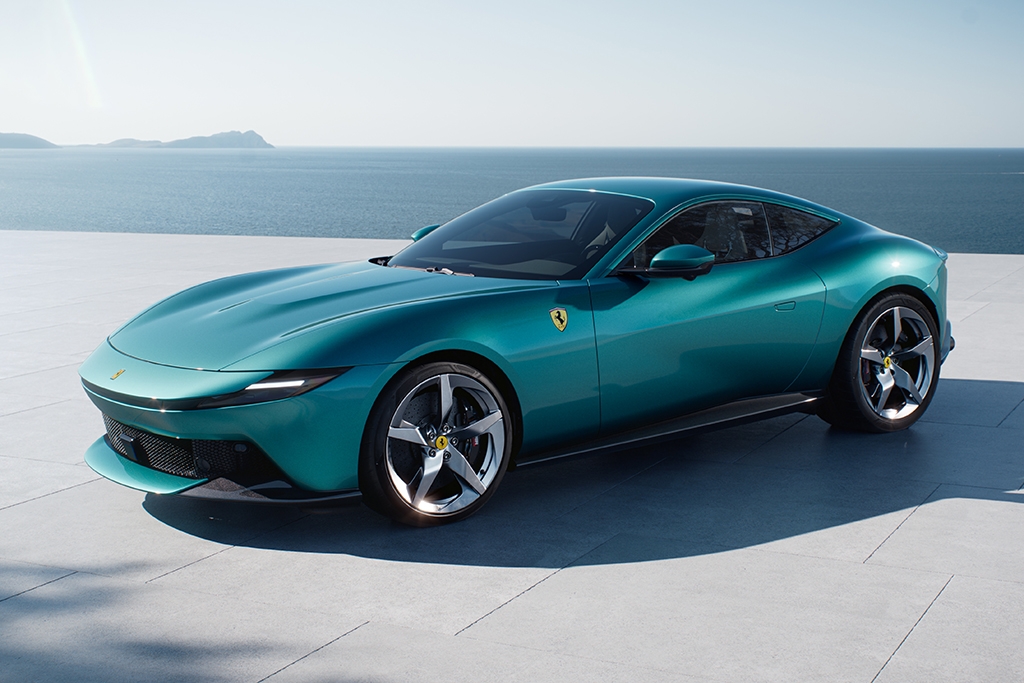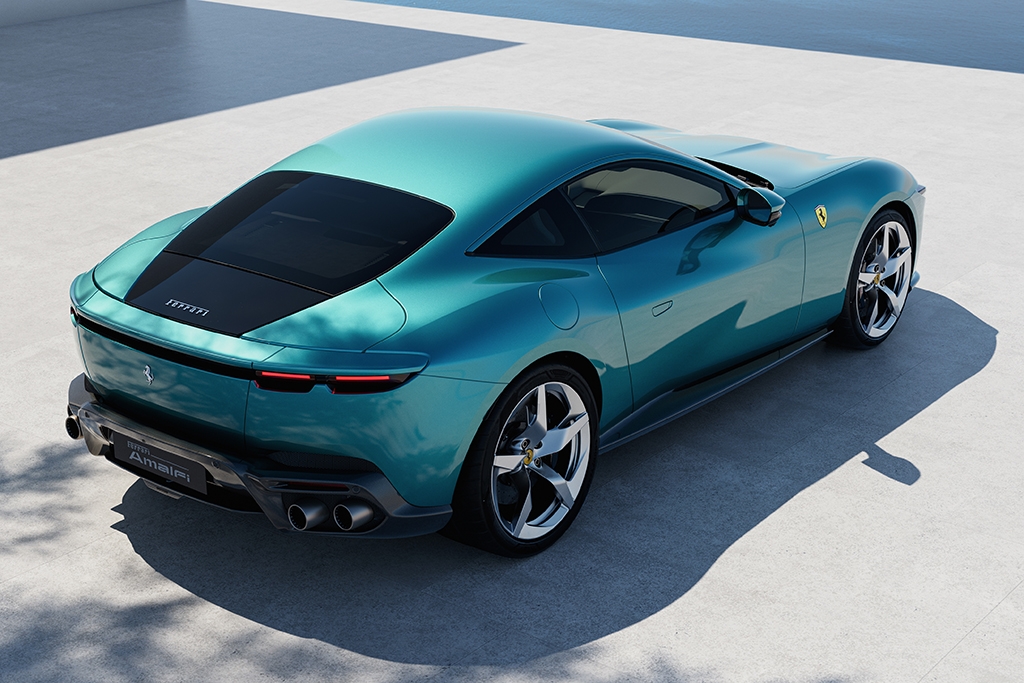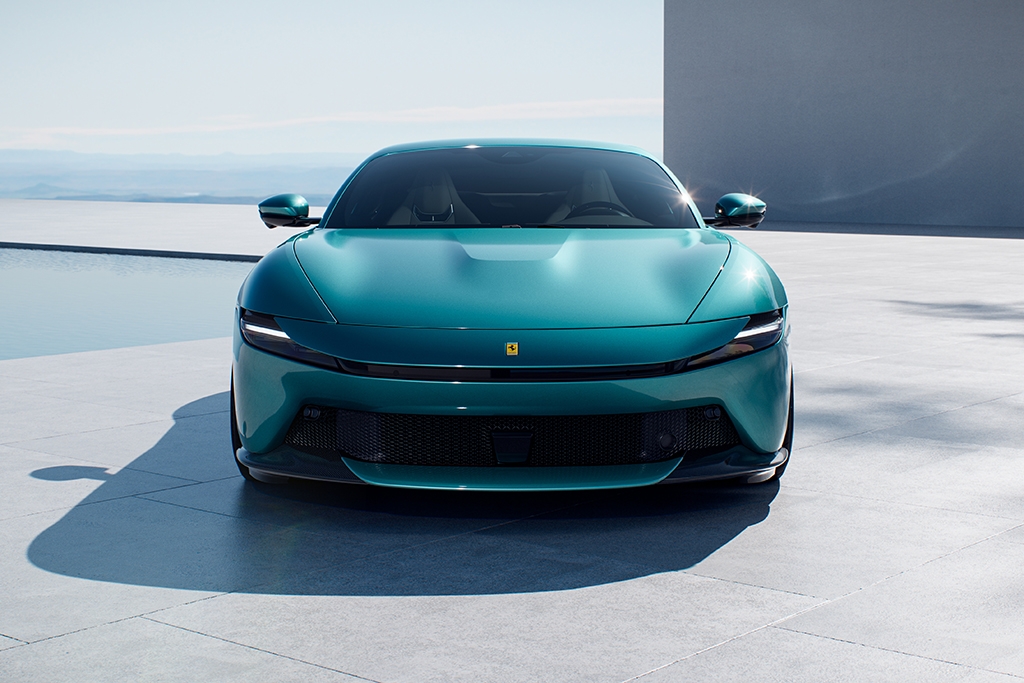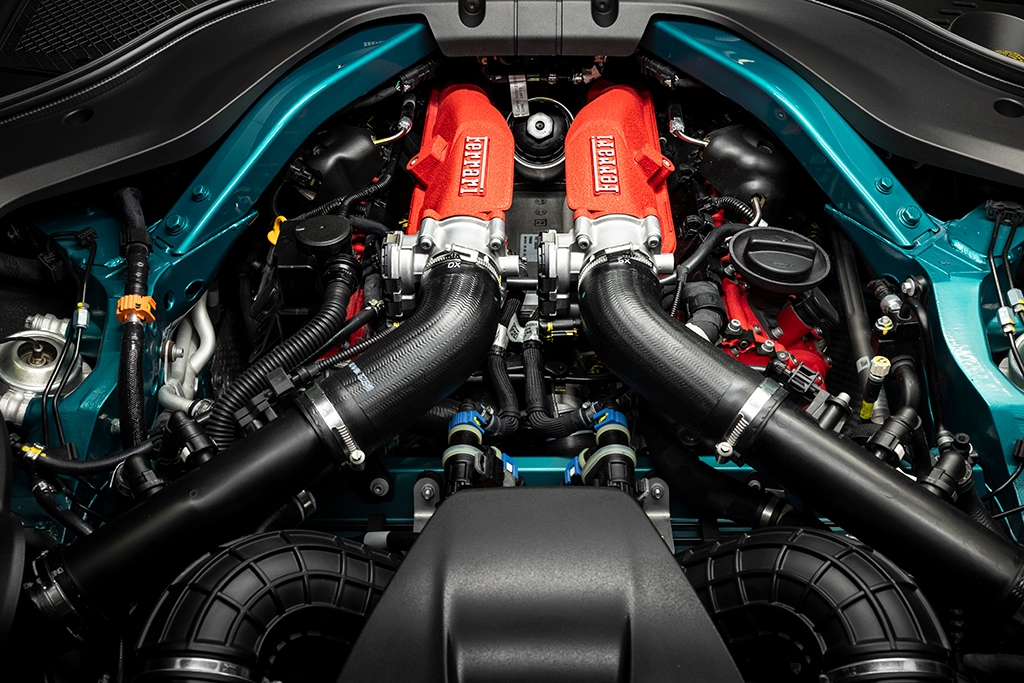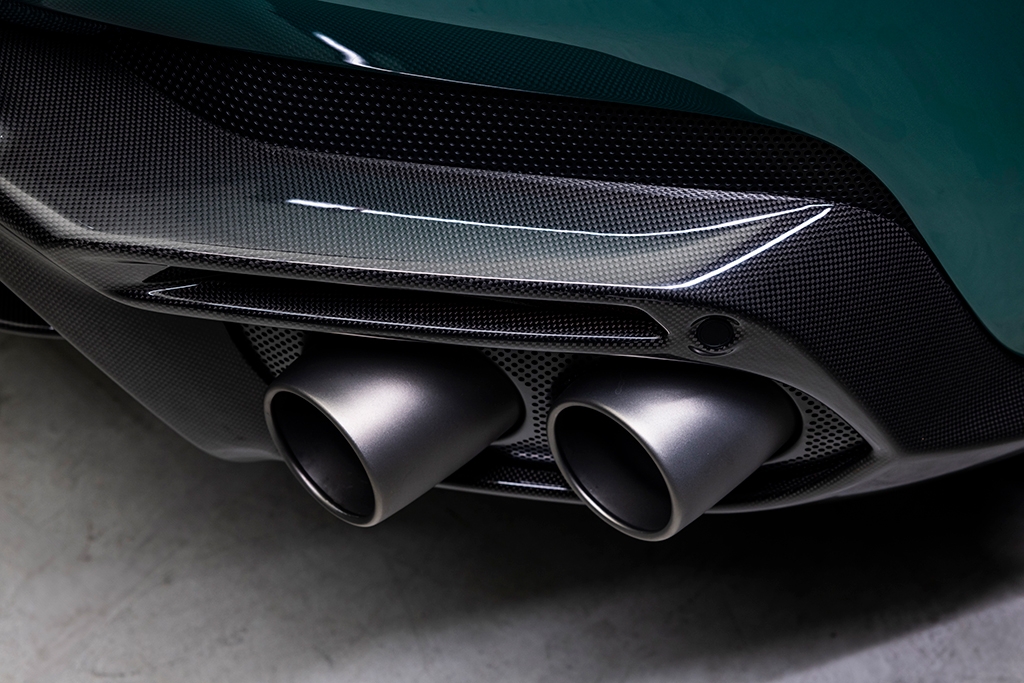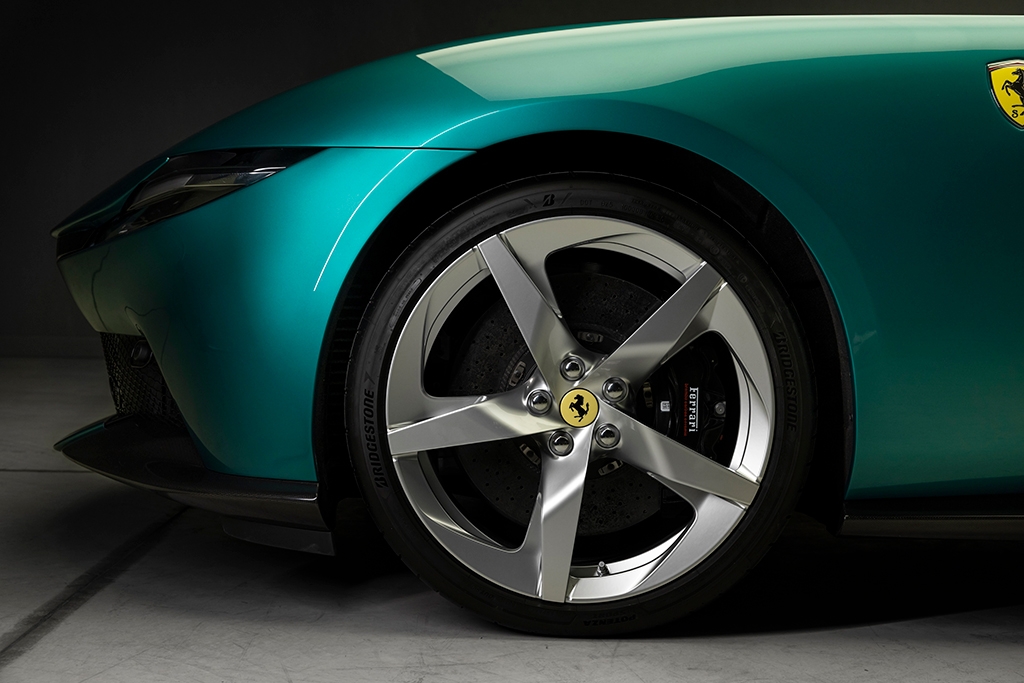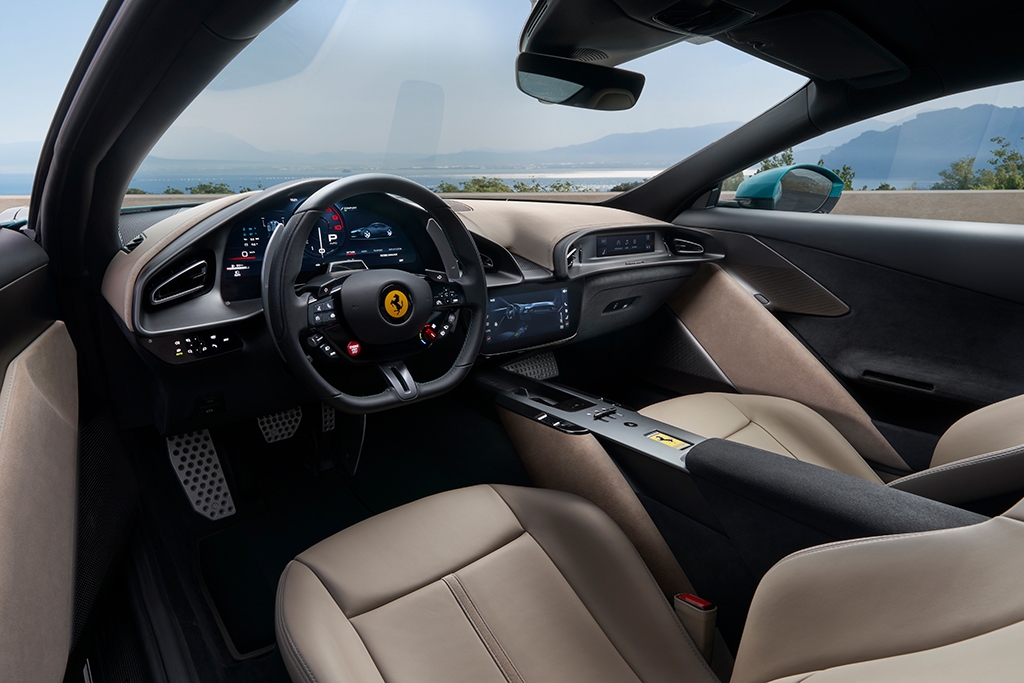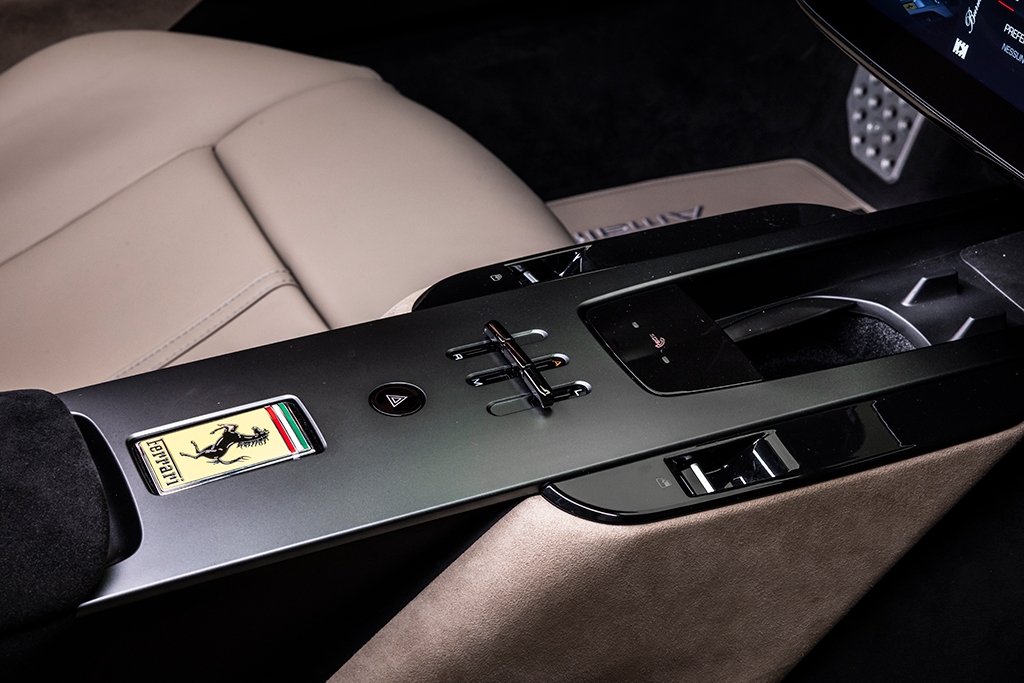The Ferrari Amalfi is the *new* new sweet life
02 Jul 2025|972 views
Ferrari introduced to the world its vision of 'La nuova dolce vita' when it pulled the covers off the Roma nearly six years ago. Now, that vision of the new sweet life has been renewed with yet another gorgeous machine named again after one of Italy's most stunning places.
Enter: The Ferrari Amalfi, a front-mid-engined 2+ coupe that will directly succeed the Roma in the brand's lineup. "The Amalfi Coast is one of the most beautiful places in southern Italy, rich in heritage, elegance," Enrico Galliera, Ferrari's Chief Marketing & Commercial Officer, shared at a press conference in Maranello where the car was unveiled at a media preview. "It's where people from around the world come to celebrate summer, enjoy life, and hopefully drive a car like this."
Understanding what Ferrari set out to achieve with the Roma forms a crucial piece of the puzzle to then understanding the pure beauty of the Amalfi.
The likes of the nearly-1,000bhp SF90 Stradale and riotous 296 GTB are immaculate showpieces for the performance embodied by the Prancing Horse - but could understandably intimidate some with their aggression. The Roma, on the other hand, was meant to lure you in with its immediately softer air and sensual styling (a perfectly honest account of its ability to be daily driven, by the way), yet also dial the heat up in dependable Ferrari-fashion, once you flicked its manettino into Race or ESC Off.
In Ferrari's own words, it was intended to open the brand's rarefied universe of luxury and performance up to first-time owners, with the promise of a car that had two souls.
So endures this "dual-soul" philosophy with the Amalfi.
Though clearly based on the Roma (the car's swollen haunches are unmistakable, even when hidden under bright-red satin prior to being unveiled), the Amalfi is its own piece of art. Ferrari's Design Director, Flavio Manzoni, personally points to terms such as "avantgarde" and "clean lines" when describing what guided its design.
"One of our most important sources of inspiration was Constantin Brancusi, who said, 'Simplicity is complexity resolved'", Manzoni told journalists. "We loved that phrase because it truly captures the spirit of this project." In similar fashion to the 12Cilindri, the Amalfi lacks a grille in the most traditional sense, and instead gets a 'floating' body-coloured wing atop of a black band hiding its sensors and radars.
Neatly integrated into the latter as well are slim head lights, above which are ducts that help to channel airflow reside. As Manzoni explained: "We avoided anthropomorphic effects, refraining from adding eyes or [a] mouth." Arguably, the Roma may boast stronger presence in the conventional sense, especially with its 250 GT-inspired front end - but the Amalfi's cleaner surfaces, conversely, draw more attention to its immaculate proportions. In tandem, all its body panels except for the greenhouse are brand new.
Returning to the note of airflow, it's worth pointing out that the Amalfi continues to present an elegant masterclass in aerowork by Ferrari.
Capping off the coupe's more monolithic rear end is a redesigned active spoiler (now part of the sheet metal, rather than the black panel aft of the windscreen) that transitions automatically between low, medium and high-downforce modes depending on the speed. Ferrari states that a maximum of 110kg of downforce can be added to the Amalfi when it's blasting along at 250km/h, with only a 4% increase in drag.
Lurking beneath the Amalfi's long and sculpted hood is a refined iteration of the twin-turbo V8 from the Roma, with output now standing at 631bhp, representing a nearly 20bhp spike. While peak torque remains the same, at 760Nm, the needle now finds the redline at an elevated 7,600rpm.
For that bump in power, Ferrari credits the development of a new turbocharging management system for the engine, and a new ECU (used in the likes of the scalpel-sharp 296 GTB and Purosangue) that has "allowed the engine's full potential to be harnessed".
The enduring emphasis on keeping weight down (the car tips the scales at just 1,470kg dry) has also bolstered Ferrari's claim that the Amalfi boasts one of the best power-to-weight ratios in its class. Mated to the eight-speed DCT first introduced on the SF90 Stradale, and with power sent solely to the rear wheels, the Amalfi can smash the century sprint in just 3.3 seconds, while 0 to 200km/h takes nine seconds flat. Given an unrestricted stretch of tarmac, it can go on to hit a top speed of 320km/h.
As Ferrari tells us, however, the tweaks to the engine were not made purely in pursuit of numbers.
Instead, new technical innovations - including the likes of lighter camshafts for quicker revolutions, and a flatplane crankshaft machined differently to reduce inertia - were targeted at increasing responsiveness. While we'll only get to experience the enhancements when behind the wheel, Ferrari states that the result is a torque curve shaped for "stronger pull at mid and high revs in all gears", with the third and fourth gears being "significantly more dynamic" than in the Ferrari Roma. Still, as mentioned, leave the Amalfi in either Wet or Comfort and a more relaxing experience awaits.
Apart from dialling up the firepower, the Amalfi benefits freshly from some of the sophisticated tech that we first saw on the 12Cilindri.
The coupe is now equipped with a brake-by-wire system and Ferrari's latest-generation ABS Evo dynamic control software, the combination of which is promised to deliver not just better, but also more predictable and more consistent stopping power.
"These systems, originally developed for our most performance-focused models, now ensure that this car is both gentle at low speeds and razor-sharp when pushed," Gianmaria Fulgenzi, Chief Product Development Officer at Ferrari explained.
While the Roma helped to pioneer the dual-cockpit cabin that we've since seen transfused into other recent Ferraris, the Amalfi takes both a welcome step back into well-loved Ferrari territory, as well as a welcome step forwards into heightened luxury and digitalisation.
As an ostensible admission that the needle may have been pushed too far forwards on tech with the previous capacitive touch buttons, the Amalfi embraces intuitive tactility with its redesigned steering wheel.
Having a 'kill switch' you can properly depress (rather than have to feel for) for the car's ADAS should certainly be appreciated by keener drivers, but the undeniable highlight here is the glint of the scorching red, aluminium Start/Stop button to bring that V8 roaring to life. "We've always aimed for eyes on the road, hands on the steering wheel," Galliera shared. "However, we may have gone a bit too far with digitalisation. Some controls are now returning to physical buttons to provide immediate, tactile feedback, something our clients specifically requested."
To enlarge the sense of space within the cabin, a new, flat central tunnel - machined out of an anodised aluminium block - also separates the driver and front passenger. With its brushed matte texture and look, this immediately looks and feels more luxurious than the rising column of the Roma with its bright chrome.
A horizontally aligned 10.25-inch infotainment touchscreen appears to hover right above the end of the block - neatly moulded into the dashboard - offering Apple CarPlay and Android Auto support.
The new infotainment system setup on the Amalfi means that, unlike in the Roma, drivers can activate Google Maps or Waze without having the gorgeous tacho on their curved digital instrument cluster disappear. As we've seen on other recent Ferraris, the front passenger is also treated to their own 8.8-inch display, so they can watch the revs rise.
The Ferrari Amalfi will launch in left-hand drive in Europe first in the first quarter of 2026, and is expected to arrive in Singapore in the second half of the year. While local pricing has yet to be confirmed, the Ferrari Roma Spider is currently sold by local authorised dealer, Ital Auto, for $1,237,715 without COE and before options, while the Roma is offered by parallel importers for $1,039,000 (all correct at time of publishing). These figures put our best bets for the Amalfi's starting price within the $1.1 million to $1.3 million range.
Ferrari introduced to the world its vision of 'La nuova dolce vita' when it pulled the covers off the Roma nearly six years ago. Now, that vision of the new sweet life has been renewed with yet another gorgeous machine named again after one of Italy's most stunning places.
Enter: The Ferrari Amalfi, a front-mid-engined 2+ coupe that will directly succeed the Roma in the brand's lineup. "The Amalfi Coast is one of the most beautiful places in southern Italy, rich in heritage, elegance," Enrico Galliera, Ferrari's Chief Marketing & Commercial Officer, shared at a press conference in Maranello where the car was unveiled at a media preview. "It's where people from around the world come to celebrate summer, enjoy life, and hopefully drive a car like this."
Understanding what Ferrari set out to achieve with the Roma forms a crucial piece of the puzzle to then understanding the pure beauty of the Amalfi.
The likes of the nearly-1,000bhp SF90 Stradale and riotous 296 GTB are immaculate showpieces for the performance embodied by the Prancing Horse - but could understandably intimidate some with their aggression. The Roma, on the other hand, was meant to lure you in with its immediately softer air and sensual styling (a perfectly honest account of its ability to be daily driven, by the way), yet also dial the heat up in dependable Ferrari-fashion, once you flicked its manettino into Race or ESC Off.
In Ferrari's own words, it was intended to open the brand's rarefied universe of luxury and performance up to first-time owners, with the promise of a car that had two souls.
So endures this "dual-soul" philosophy with the Amalfi.
Though clearly based on the Roma (the car's swollen haunches are unmistakable, even when hidden under bright-red satin prior to being unveiled), the Amalfi is its own piece of art. Ferrari's Design Director, Flavio Manzoni, personally points to terms such as "avantgarde" and "clean lines" when describing what guided its design.
"One of our most important sources of inspiration was Constantin Brancusi, who said, 'Simplicity is complexity resolved'", Manzoni told journalists. "We loved that phrase because it truly captures the spirit of this project." In similar fashion to the 12Cilindri, the Amalfi lacks a grille in the most traditional sense, and instead gets a 'floating' body-coloured wing atop of a black band hiding its sensors and radars.
Neatly integrated into the latter as well are slim head lights, above which are ducts that help to channel airflow reside. As Manzoni explained: "We avoided anthropomorphic effects, refraining from adding eyes or [a] mouth." Arguably, the Roma may boast stronger presence in the conventional sense, especially with its 250 GT-inspired front end - but the Amalfi's cleaner surfaces, conversely, draw more attention to its immaculate proportions. In tandem, all its body panels except for the greenhouse are brand new.
Returning to the note of airflow, it's worth pointing out that the Amalfi continues to present an elegant masterclass in aerowork by Ferrari.
Capping off the coupe's more monolithic rear end is a redesigned active spoiler (now part of the sheet metal, rather than the black panel aft of the windscreen) that transitions automatically between low, medium and high-downforce modes depending on the speed. Ferrari states that a maximum of 110kg of downforce can be added to the Amalfi when it's blasting along at 250km/h, with only a 4% increase in drag.
Lurking beneath the Amalfi's long and sculpted hood is a refined iteration of the twin-turbo V8 from the Roma, with output now standing at 631bhp, representing a nearly 20bhp spike. While peak torque remains the same, at 760Nm, the needle now finds the redline at an elevated 7,600rpm.
For that bump in power, Ferrari credits the development of a new turbocharging management system for the engine, and a new ECU (used in the likes of the scalpel-sharp 296 GTB and Purosangue) that has "allowed the engine's full potential to be harnessed".
The enduring emphasis on keeping weight down (the car tips the scales at just 1,470kg dry) has also bolstered Ferrari's claim that the Amalfi boasts one of the best power-to-weight ratios in its class. Mated to the eight-speed DCT first introduced on the SF90 Stradale, and with power sent solely to the rear wheels, the Amalfi can smash the century sprint in just 3.3 seconds, while 0 to 200km/h takes nine seconds flat. Given an unrestricted stretch of tarmac, it can go on to hit a top speed of 320km/h.
As Ferrari tells us, however, the tweaks to the engine were not made purely in pursuit of numbers.
Instead, new technical innovations - including the likes of lighter camshafts for quicker revolutions, and a flatplane crankshaft machined differently to reduce inertia - were targeted at increasing responsiveness. While we'll only get to experience the enhancements when behind the wheel, Ferrari states that the result is a torque curve shaped for "stronger pull at mid and high revs in all gears", with the third and fourth gears being "significantly more dynamic" than in the Ferrari Roma. Still, as mentioned, leave the Amalfi in either Wet or Comfort and a more relaxing experience awaits.
Apart from dialling up the firepower, the Amalfi benefits freshly from some of the sophisticated tech that we first saw on the 12Cilindri.
The coupe is now equipped with a brake-by-wire system and Ferrari's latest-generation ABS Evo dynamic control software, the combination of which is promised to deliver not just better, but also more predictable and more consistent stopping power.
"These systems, originally developed for our most performance-focused models, now ensure that this car is both gentle at low speeds and razor-sharp when pushed," Gianmaria Fulgenzi, Chief Product Development Officer at Ferrari explained.
While the Roma helped to pioneer the dual-cockpit cabin that we've since seen transfused into other recent Ferraris, the Amalfi takes both a welcome step back into well-loved Ferrari territory, as well as a welcome step forwards into heightened luxury and digitalisation.
As an ostensible admission that the needle may have been pushed too far forwards on tech with the previous capacitive touch buttons, the Amalfi embraces intuitive tactility with its redesigned steering wheel.
Having a 'kill switch' you can properly depress (rather than have to feel for) for the car's ADAS should certainly be appreciated by keener drivers, but the undeniable highlight here is the glint of the scorching red, aluminium Start/Stop button to bring that V8 roaring to life. "We've always aimed for eyes on the road, hands on the steering wheel," Galliera shared. "However, we may have gone a bit too far with digitalisation. Some controls are now returning to physical buttons to provide immediate, tactile feedback, something our clients specifically requested."
To enlarge the sense of space within the cabin, a new, flat central tunnel - machined out of an anodised aluminium block - also separates the driver and front passenger. With its brushed matte texture and look, this immediately looks and feels more luxurious than the rising column of the Roma with its bright chrome.
A horizontally aligned 10.25-inch infotainment touchscreen appears to hover right above the end of the block - neatly moulded into the dashboard - offering Apple CarPlay and Android Auto support.
The new infotainment system setup on the Amalfi means that, unlike in the Roma, drivers can activate Google Maps or Waze without having the gorgeous tacho on their curved digital instrument cluster disappear. As we've seen on other recent Ferraris, the front passenger is also treated to their own 8.8-inch display, so they can watch the revs rise.
The Ferrari Amalfi will launch in left-hand drive in Europe first in the first quarter of 2026, and is expected to arrive in Singapore in the second half of the year. While local pricing has yet to be confirmed, the Ferrari Roma Spider is currently sold by local authorised dealer, Ital Auto, for $1,237,715 without COE and before options, while the Roma is offered by parallel importers for $1,039,000 (all correct at time of publishing). These figures put our best bets for the Amalfi's starting price within the $1.1 million to $1.3 million range.
Latest COE Prices
July 2025 | 1st BIDDING
NEXT TENDER: 23 Jul 2025
CAT A$101,102
CAT B$119,600
CAT C$66,689
CAT E$118,500
View Full Results Thank You For Your Subscription.





















